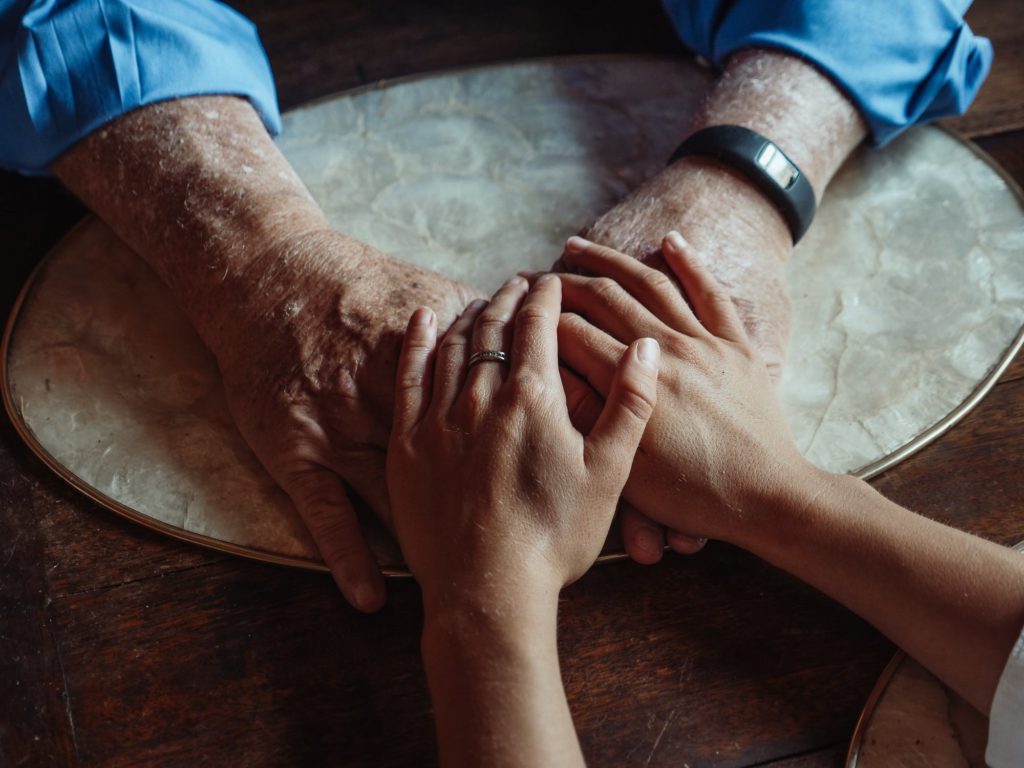Seeing a sick loved one constantly in pain can be emotionally heartbreaking. As such, it is the goal of hospice care services to lessen that pain. But how does pain management work exactly? And what can you do to help them? Let’s take a closer look.

Understanding The Goal Of Pain Management
The first thing that you need to understand about pain management is its importance. The goal of any hospice care service is to help end-of-life patients be more comfortable. And being in constant pain will significantly impede that comfort.
In particular, that constant pain can make it harder to do even simple activities like eating and sleeping. And it will have a significant impact on their other symptoms, which will affect their mood and ability to think.
All of these will ultimately affect how they interact with their loved ones. They might become more withdrawn as they try to hide the discomfort that they are feeling. On the other hand, their families can become more distressed over the situation. This creates a heavier atmosphere that is not conducive to everyone’s well-being.
Another important goal is to help patients pass on without much pain. This is crucial as it helps not just them but their families. The latter will have peace of mind knowing that their loved one did not have to suffer and move forward.
Evaluating Pain
An important aspect of pain management in hospices is getting a good grasp of the patient’s pain levels. Here, they first need to look for physical signs of discomfort. This is especially the case when dealing with patients who might have a hard time communicating what they feel, such as those with dementia.
Some of such signs to be aware of include:
- Faster breathing
- Rise in systolic blood pressure
- Holding a rigid position or holding arms or legs tightly
- Guarding part of the body when turning
- Rocking, fidgeting, or pacing
- Resisting care
- Crying, moaning, or calling out
- Confusion
Note that patients might not always show the same signs. As such, you need to be more inquiring to get an idea of the pain they experience.
Pain Management Scales
Once hospices have an idea of what kind of pain a patient experiences, they need to quantify it for better evaluation. There are various scales that hospices use. Some of the most popular are:
- 0-10 numeric pain rating scale: Patients rate the pain they experience using a numerical value. The higher the value, the more intense the pain is.
- Wong-Baker FACES rating scale: This is a more simplified rating scale that uses emojis to rank pain. This makes it more suitable for people who cannot respond in a more definite manner.
- FLACC scale: The scale assesses five different categories, including the face, legs, and even activity level, to give a clearer picture of the patient’s condition.
It would help for you to be familiar with the system that your hospice care service provider uses. This way, you can make assessments of your own. You and the provider can also create a system that would better suit your loved one’s situation.

Managing Pain Through Medication
In most hospice care services, the main means of pain management is through medication. The goal of these medicines is to suppress the pain and help the patient get back to doing activities they want. As such, they need to take them regularly to get the best possible results.
Some of the most common pain-relieving medication that hospice care services give their wards include:
- Acetaminophen (Tylenol): This drug reduces fever and any mild to moderate pain.
- Lorazepam: This one is the second most common drug prescribed for pain management. The drug helps reduce anxiety, agitation, shortness of breath, and insomnia.
- Bisacodyl: It helps treat constipation, which is a common side effect of taking pain medication.
- Dexamethasone: The drug reduces swelling and relieves nausea. It can also help increase appetite.
- Haloperidol: Another common drug for reducing nausea, agitation, and even hallucinations.
The exact combination of drugs prescribed to your loved one depends on their condition. Hospices want to reduce the side effects as much as possible. Thus, they will often refer to the doctor’s diagnosis and recommendations to adjust the dosage.
Additionally, pain medication might include giving the patient oxygen. The gas can help them reduce shortness of breath and lessen the sensation of not getting enough air. Additionally, it can help promote healing.
Morphine And Other Opioids
For severe pain, your loved one’s doctor and the hospice can opt to administer morphine or other opioids. This can become a point of contention, as patients and their loved ones are often worried about potential addiction.
While this is a legitimate concern, there are various things you need to know. One is that most patients admitted to hospices only have a few months to live. This is not enough time for anyone to develop an addiction.
Furthermore, the hospice monitors the type and dosage of the drug, and how it is given. They would then switch to another drug in the event of initial signs of tolerance. This lessens the likelihood of dependency on that drug.
It is also worth noting that patients given opioids live longer. This tracks back to the fact that their pain is managed better. As such, you should not worry about side effects, as the hospice will make sure to mitigate these.

Non-Medicinal Pain Management
Aside from drugs, the hospice might use alternative ways to reduce your loved one’s pain. These can include different therapies like:
- Guided imagery
- Massage
- Pet therapy
- Acupuncture
- Music or art therapy
- Hot and cold therapy
Note that these therapies are meant more to be supplementary and not the primary means of pain management. As such, you should ask the hospice what alternative therapies they offer and how these will fit into your loved one’s pain management program.

Your Role In Pain Management
While caregivers do much of the work, you also play a significant role in helping your loved ones manage their pain. One way you can do that is by assisting them in creating a pain log. This ensures that hospice staff gets the right details about their situation. You can also ensure that they take their medicines regularly. And lastly, you serve as their emotional support.
So, don’t wait until they are in severe pain. Get the right pain management help and quality hospice care services by contacting Amavi today. We are always ready to lend your loved one a caring hand.
